How can lacrosse players optimize their workouts for maximum performance. What are the best exercises to improve strength, speed, and agility in lacrosse. Which training techniques are most effective for enhancing lacrosse-specific skills.
Dynamic Warm-Up: The Foundation of Effective Lacrosse Training
A proper dynamic warm-up is crucial for lacrosse players preparing for intense workouts. Why is this step so important? Dynamic warm-ups increase blood flow, loosen muscles, and significantly reduce the risk of strains and pulls. How long should a warm-up last? Aim for at least 10 minutes of activities like jogging, lunging, shuffling, and arm circles to prepare your body for the challenges ahead.
Which muscle groups deserve extra attention during a lacrosse-specific warm-up? Focus on:
- Calves
- Hips
- Shoulders
- Core
These areas are heavily engaged in lacrosse movements and benefit from thorough preparation.
Compound Exercises: Building Raw Strength and Power
Compound exercises form the cornerstone of an effective lacrosse strength training program. What makes these movements so valuable? They engage multiple large muscle groups simultaneously, elevating heart rate and triggering anabolic hormone release. Which exercises should be prioritized?

- Squats
- Deadlifts
- Power cleans
How should these exercises be programmed? For squats and deadlifts, aim for 3-4 sets in the 6-10 rep range. Olympic lifts like power cleans should be performed with fewer reps but maximum explosiveness. This approach builds the raw strength and power essential for dominating the lacrosse field.
Plyometric Training: Developing Explosive Quickness
Plyometric exercises are indispensable for lacrosse players seeking to enhance their explosiveness and agility. How do plyometrics benefit athletes? The rapid muscle contractions and eccentric loading involved in these movements improve:
- Strength
- Power
- Agility
- Vertical leap
Which plyometric exercises are most effective for lacrosse players?
- Box jumps
- Broad jumps
- Lateral bounds
When should plyometrics be incorporated into a workout? For optimal results, perform these drills at the beginning of your session when you’re freshest. How should players progress with plyometrics? Start with lower-intensity exercises and gradually build up to more advanced movements as your body adapts over time.

Core Strength: The Key to Precision and Stability
A strong core is fundamental for lacrosse players, providing trunk stability for acceleration, cutting, and shooting with accuracy. Which exercises target the core muscles most effectively?
- Planks
- Side planks
- V-ups
- Hanging leg raises
How often should core work be incorporated into a training program? Aim to train your core 2-3 times per week. What’s an optimal approach to core exercise programming? For planks, hold for 30-60 seconds. For other movements, target 3 sets of 10-15 repetitions. This regimen will develop the abdominal and oblique strength crucial for lacrosse performance.
Upper Body Pulling: Enhancing Shot Power and Shoulder Health
Upper body pulling exercises are essential for lacrosse players, developing the back muscles that stabilize the shoulders during checks, passes, and shots. Which pulling exercises should be prioritized?
- Bent-over rows
- Seated cable rows
- Inverted rows
How can players maximize the benefits of these exercises? Focus on controlled form, emphasizing the squeeze of the shoulder blades at the peak of each repetition. Why is balancing pushing and pulling exercises important? To maintain optimal shoulder health, perform at least as many sets of rows as pressing exercises like bench press.

Mastering Chin-ups and Pull-ups
Chin-ups and pull-ups are bodyweight movements that develop exceptional upper body pulling strength. How do these exercises differ? Grip the bar with palms facing you for chin-ups or away for pull-ups. What if a player struggles with full bodyweight pull-ups? Begin with an assisted pull-up machine if necessary. How should these exercises be programmed? Work towards performing 3 sets to failure, gradually increasing repetitions over time. Why are these exercises particularly valuable for lacrosse players? The pulling strength developed prevents shoulder injuries and enhances shot power.
Speed and Agility: Outmaneuvering Opponents on the Field
Speed and agility are critical components of lacrosse performance. How can players develop these attributes? Incorporate a variety of training methods:
- Short sprints (10-30 yards)
- Longer runs (200-400m)
- Suicides and cone drills
How frequently should speed work be included in a training program? Aim for 2-3 sessions per week, always following a thorough dynamic warm-up. What’s the key to effective speed training? Maintain proper form and give maximum effort during each drill for optimal results.

Enhancing Footwork and Coordination
Lacrosse demands exceptional footwork and agility for sudden direction changes. Which drills are most effective for developing these skills?
- Ladder drills
- Shuttle runs
- Cone drills
How should players approach these exercises? Begin slowly, prioritizing proper technique before gradually increasing pace. What should athletes focus on during agility drills? Maintain alignment between ankles and knees throughout the movements to develop functional agility and reduce injury risk.
Endurance Training: Building Stamina for Peak Performance
Aerobic endurance is crucial for maintaining high-level play throughout an entire lacrosse game. How can players develop their stamina? Long, steady runs of 30 minutes or more are key. What pace should be maintained during these runs? Aim for a conversational pace where you can still speak comfortably. How should endurance training be progressed? Gradually increase mileage over time, being mindful of proper recovery to prevent overtraining and injury.

Incorporating Sled Work for Full-Body Power
Sled pushing and dragging exercises develop tremendous full-body strength and power. How much weight should be used? Begin with 10-20% of your body weight. What’s an effective distance for sled work? Focus on powerful leg drive and explosion over 20-40 yard distances. How often should sled training be included? Incorporate these exercises 1-2 times per week after a thorough warm-up.
Supplementary Training Techniques for Lacrosse Athletes
Resistance bands offer valuable variety in lacrosse training programs. How do bands benefit athletes? They allow for working smaller stabilizer muscles often missed by machines, helping prevent overuse injuries. Which band exercises are particularly effective?
- Band walks
- Lateral lunges
- Overhead presses
What’s the key to effective band training? Focus on smooth, controlled movements to maximize the benefits.
Flexibility and Recovery Strategies
Stretching and recovery work are essential components of a comprehensive lacrosse training program. When should stretching be performed? Incorporate stretching both before and after workouts to enhance flexibility and aid muscle recovery. Which areas should receive particular attention?
- Calves
- Hamstrings
- Hips
- Quadriceps
- Shoulders
How long should each stretch be held? Aim for 30 seconds per static stretch. What additional recovery techniques can be beneficial? Foam rolling improves circulation and reduces post-workout soreness in targeted muscle groups.

Nutrition and Recovery: Fueling Performance and Growth
Proper nutrition is crucial for maximizing the benefits of lacrosse training. What should players focus on in their diets? Emphasize lean proteins, complex carbohydrates, and healthy fats, especially around workout times. How important is hydration? Consistent hydration with water and electrolyte drinks is essential for performance and recovery. How can meal timing impact training results? Strategically timing meals and snacks can promote muscle growth and enhance recovery.
The Importance of Rest and Sleep
Adequate rest is fundamental for athletic development. Why is rest so critical? It allows the body to rebuild stronger and faster after the stress of hard training. How much rest should lacrosse players incorporate? Take at least 1-2 complete rest days per week. How can athletes avoid overtraining? Be cautious about increasing training load too rapidly, and prioritize quality sleep. How much sleep do lacrosse players need? Aim for 7-9 hours of sleep per night to support optimal recovery and performance.
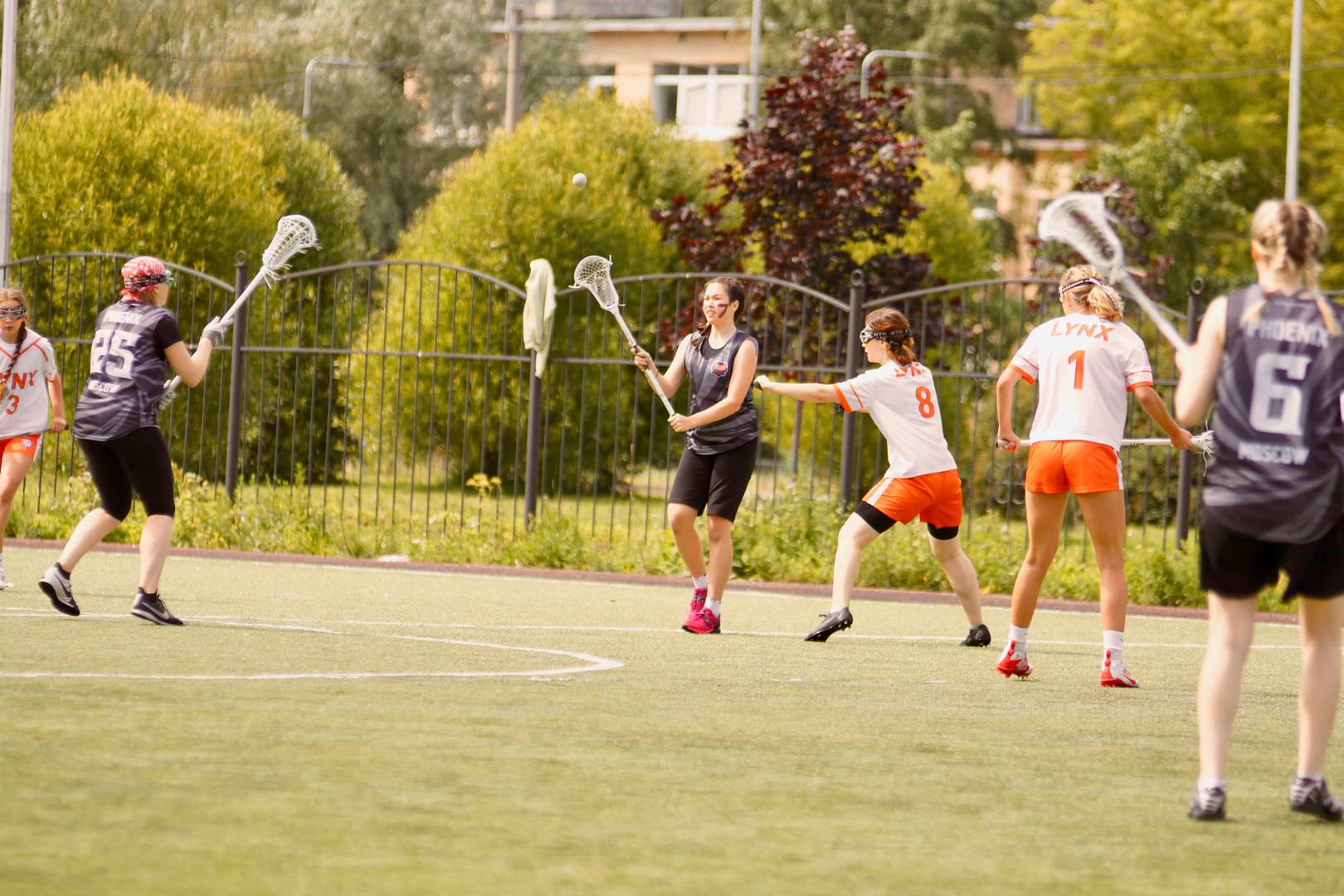
By integrating these comprehensive training strategies, lacrosse players can develop the total-body strength, speed, agility, and endurance necessary for peak performance on the field. Remember to tailor your program to your individual needs and goals, and always prioritize proper form and recovery to maximize results while minimizing injury risk.
As a lacrosse player, a proper dynamic warm-up before your workout is crucial. Skipping this vital step increases your risk of strains and pulls. Spend at least 10 minutes preparing your body for the intense training to come. Jogging, lunging, shuffling, and arm circles get your blood pumping and loosen up your muscles. Don’t forget to give extra attention to the muscles heavily used in lacrosse – like your calves, hips, shoulders and core.
Warm Up Properly Before Lacrosse Workouts
Compound exercises like squats, deadlifts, and cleans should form the foundation of your lacrosse workout routine. They engage multiple large muscle groups simultaneously, spiking your heart rate and triggering an anabolic hormonal response.Aim for 3-4 sets of squats and deadlifts in the 6-10 rep range. Do Olympic lifts like power cleans for fewer reps but maximum explosiveness. These compound moves build the raw strength and power so crucial for dominance on the field.
Plyometric exercises like box jumps, broad jumps, and lateral bounds are key for developing the quickness and explosiveness needed in lacrosse. The rapid muscular contractions and eccentric loading involved in plyos enhances strength, power, agility, and vertical leap.Include plyometric drills at the start of your workout when you are freshest. Start with lower intensity exercises and build up to more advanced plyos over time as your body adapts.
A strong core stabilizes the trunk, allowing you to accelerate, cut, and shoot with precision. Exercises like planks, side planks, V-ups, and hanging leg raises target the abdominal and oblique muscles for improved core strength. Work your core 2-3 times per week, holding planks for 30-60 seconds and aiming for 3 sets of 10-15 reps on other moves.
Rows build the upper back muscles which stabilize the shoulders during checks, passes, and shots. Bent over rows, seated cable rows, and inverted rows are great options. Focus on controlled form, squeezing the shoulder blades together at the top of each rep. For optimal shoulder health, do at least as many sets of rows as pressing exercises like bench press.
Chin-ups and pull-ups are bodyweight moves that develop incredible upper body pulling strength. Grip the bar with palms facing you for chin-ups or away for pull-ups. Use an assisted pull-up machine if needed at first. Work up to 3 sets until failure over time. Pulling strength prevents shoulder injuries and powers your shot.
Sprinting builds acceleration and top speed, allowing you to blow past opponents in transition. Include short 10-30 yard sprints, longer 200-400m runs, and suicides/cone drills in your program. Train speed work 2-3 times weekly after a dynamic warm-up. Maintain proper form and full effort for maximum results.
Lacrosse demands sudden changes of direction and agility. Ladder drills force you to coordinate complex footwork patterns, enhancing your foot speed and body control. Other options include shuttle runs and cone drills. Start off slowly and focus on technique before increasing your pace. Ankles and knees should stay aligned throughout.
Aerobic endurance gives you the stamina to run all game long without getting gassed. Long steady runs of 30+ minutes are key. Maintain a conversational pace where you can still speak comfortably. Increase your mileage gradually over time. Proper recovery including rest days prevents overtraining and injury.
Pushing or dragging weighted sleds develops tremendous full body strength and power. The resistance taxes your muscles as you drive forward with each step. Use 10-20% of your body weight at first. Go for 20-40 yard distances focusing on powerful leg drive and explosion. Use sleds 1-2 times per week after warm-up.
Resistance bands add variability to your training, helping prevent overuse injuries. Perform exercises like band walks, lateral lunges, and overhead presses. Bands allow you to work the smaller stabilizer muscles missed by machines. Focus on smooth and controlled movements for optimal effects.
Taking time to stretch both before and after lacrosse workouts enhances flexibility and aids muscle recovery. Hold static stretches targeting your calves, hamstrings, hips, quadriceps, and shoulders for 30 seconds each. Foam rolling these areas improves circulation and reduces post-workout soreness too.
Fueling your body properly gives you the energy to get the most out of your training. Emphasize lean proteins, complex carbs, and healthy fats around workouts. Hydrate consistently with water and electrolyte drinks. Time your meals and snacks appropriately to promote muscle growth and recovery.
Hard training tears your body down. Allowing adequate rest rebuilds you bigger, faster, and stronger. Take at least 1-2 rest days per week and avoid increasing your training load too drastically. Sleep 7-9 hours nightly. Listen to your body and take extra rest as needed to prevent overtraining.
An expert lacrosse strength coach can design a periodized, sport-specific program tailored to your needs and goals. They’ll incorporate the optimal training modalities, volumes, intensities, and recovery to help take your performance to the next level.
Compound lifts like squats and deadlifts should form the foundation of your lacrosse training program. These multi-joint exercises engage multiple large muscle groups at once. This stimulates an intense full-body anabolic response unlike isolation lifts. The key is progressive overload – gradually increasing the weight, sets and reps over time to continually challenge your body.
Focus On Compound Lifts Like Squats And Deadlifts
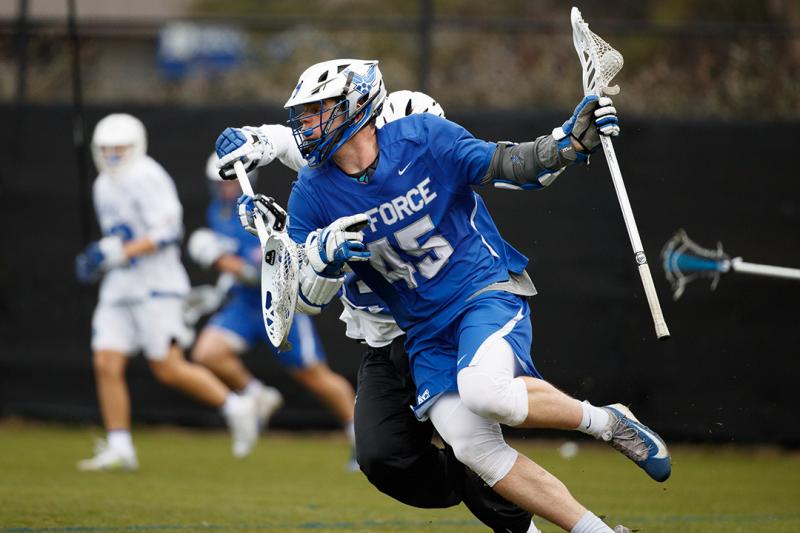
Let’s start with the king of all lifts – the back squat. Driving through your heels with a loaded barbell across your traps and upper back taxes the entire lower body from your quads and glutes down to your calves. Squats build tremendous strength and power in the hips and legs that translates directly to sprinting speed and checking ability.
Begin with lighter weights focusing on nailing proper form. Initiate the movement by sitting your hips back and descending until your thighs are parallel or just below parallel. Drive up forcefully through your heels, keeping your chest up and core braced. Do 3-4 sets of 6-10 reps, adding weight each session within your abilities.
Deadlifts target many of the same major lower body muscles as squats. But the hip hinge pattern and heavier loads also build tremendous back, glute and hamstring strength. These posterior chain muscles are vital for starting and stopping quickly on the field.
Take an athletic stance with feet hip-width apart and bar over mid-foot. Keep your back flat as you push your hips back and bend down to grip the bar. Drive through your heels, squeezing your glutes and pulling the bar up close along your body. Lower under control. Build up to 3-5 sets of 3-6 heavy but clean reps.
The power clean is an explosive Olympic lift variation that will boost your athleticism. Starting with the bar at the floor, explosively extend your hips, knees and ankles to lift the bar up to your shoulders in one smooth motion. Catch it in a quarter squat before standing up fully under control.
Explosive triple extension and coordinating the catch takes practice. Start with lighter weights nailing the proper technique before increasing loads. Do fewer reps – typically 3-6 – with full power and focus. The power clean develops rate of force production.
Front squats are similar to back squats but with the bar positioned across the front of your shoulders and wrists. This shifts more stress onto your quadriceps muscles. angled grip helps rotate your elbows forward to rack the bar.
The quad focus makes front squats an excellent complement to build strength through a fuller range of motion. Varying your squat style also reduces overuse on your body. For total lower body development, incorporate both back and front squats.
Stagger your stance slightly wider than hip-width for the sumo deadlift. Grip the bar with hands inside your legs and drive through your heels to lift. The sumo deadlift variation targets your inner thigh adductors.
Strong adductors stabilize your legs for multidirectional movements on the field. Mixing in sumo deadlifts hits more muscles for well-rounded development. Prioritize good form and a controlled lift rather than just piling on weight.
The Romanian deadlift or RDL works the hamstrings through an even greater range of motion. Initiate the movement by hinging at your hips with soft knees. Keep a flat back as you drive your hips rearwards and descend until you feel a stretch in your hamstrings before rising back up.
Proper form prevents rounding your back and risking injury. The RDL really isolates the hamstrings while also building glute and lower back strength for powerful hip extension.
The Zercher squat allows you to squat heavy loads without needing a spotter or squat rack. Instead of resting the bar on your traps, hold it in the crooks of your elbows against your torso. Maintain good upright posture as you squat down and back up.
The Zercher squat variation forces your core to engage to stabilize the unique bar position. This translates to better posture and midline stability during intense lacrosse play.
Safety squat bars with angled handles allow you to squat comfortably while reducing strain on the shoulders. The cambered design brings your hands in closer to your torso for a more upright, athletic position.
Varying your equipment trains your body in different ways while reducing repetitive stress. Rotate safety bar, barbell, and Zercher squats to become a stronger, resilient athlete.
Plyometric exercises build explosive power by utilizing rapid stretch-shortening cycles of the muscles. Think jumps, bounds and hops. The key is harnessing elastic energy and the stretch reflex to generate more force.
Train Explosiveness With Plyometrics

Box jumps are a plyometric staple. Step up onto a box or platform, then immediately explode up off both feet to jump on top. Control the landing by absorbing impact through your hips and knees before stepping back down.
Start with smaller, moderate height boxes before progressing higher. Always land softly with control – no loud crashing down! Box jump power directly improves vertical leap.
Broad jumps, also called standing long jumps, build horizontal explosiveness. Swing your arms behind you and dip down into a quarter squat. Explosively jump out as far as you can, extending your hips, knees and ankles. Land in a quarter squat to absorb impact.
Measure your distance and aim to increase it over time as your power improves. Broad jumping forces triple extension of the lower body for performance enhancement.
Lateral bounds boost side-to-side power and agility. Start in an athletic stance. Push horizontally off one leg, bounding to the side and landing softly on the opposite leg. Continue bounding back and forth for the desired distance.
Make sure to drive equally off both legs for balance. Do 2-3 sets of lateral bounds focusing on consistent height and technique.
Tuck jumps are intense plyos that simultaneously build power and conditioning. From a standing position, explosively jump up tucking both knees to your chest at the peak. Rapidly repeat, jumping as high as possible with each rep.
Aim for height and minimum ground contact time between jumps. Tuck jumps are extremely taxing, so start with shorter sets of just 6-10 reps with long rest periods.
Depth jumps add advanced eccentric training to plyometrics. Find a box 12-30 inches high – start lower to be safe. Step off the box, landing softly onto both feet in a quarter squat. Immediately explode up into your next jump.
The impact forces your muscles to rapidly decelerate before reversing to maximum concentric contraction. This builds reactive strength and muscular coordination.
Resisted sprint sled pulls and pushes enhance your power and acceleration. Attach a rope to a weighted sled. Sprint aggressively against the resistance for short 10-40 yard distances focusing on strong, quick turnover.
Vary your angles of drive – backwards, lateral, incline, etc. The extra resistance trains power application specific to sports like lacrosse.
Ankling drills boost foot speed, coordination and balance. Rise up onto your toes then rapidly alternate lifting one foot up before quickly replacing it back to the ground. Increase your turnover pace while maintaining balance.
Quicker feet translate to quicker cuts on the field. Do 2-3 sets of 20-30 sec ankle drills 1-2x per week after proper warm-up.
Stair running is a great plyometric cardio exercise. Bound up the steps taking 2-3 stairs at a time. Control the landing and rebound quickly back up without pausing between strides.
Get your knees high and drive your arms for max power. Vary between double and single leg strides. Build up to 10 continuous floors as conditioning improves.
A rock solid core is vital for any lacrosse player. Your core links upper and lower body movement, allowing you to accelerate, cut sharply, and shoot with precision. Targeting the abs, obliques, lower back, hips and pelvic floor builds functional fitness for dominance on the field.
Build Core Strength With Planks And Leg Raises
Planks strengthen the entire core musculature in an isometric hold. Start face down, propped up on forearms and toes. Maintain a straight line from shoulders to ankles, bracing your core. Hold for 20-60 seconds before resting.
Slowly build plank hold duration over time. For added difficulty, try single arm/leg planks or planks on an unstable surface like a bosu ball. Don’t allow your hips to sag – keep tension and a flat back.
Side planks target the obliques in an important stabilizing role. Rotate onto one forearm and the side of your foot, raising your body in a straight line. Hold for time before switching sides. Do 2-3 sets per side.
The obliques resist lateral flexion and rotation of the trunk – crucial for change of direction speed. Make side planks harder by extending your free arm overhead or adding weight.
V-ups and leg lifts work the rectus abdominis and hip flexors through their full range of motion. Lie on your back, arms extended overhead. Crunch upward while simultaneously raising your legs.
Aim to touch your toes with your hands at the top, forming a V shape. Control the descent. Do 2-3 sets of 10-15 reps, increasing difficulty by holding weights or bands.
Hanging leg raises and knee raises strengthen the lower abdominals. Grip a pull-up bar, allowing your body to fully extend. Contract your abs to lift knees or legs up in front of you before lowering with control.
Maintain a hollow body position throughout to keep tension on the abdominals rather than hip flexors. Do 2-3 sets to failure or 15-20 controlled reps.
Russian twists develop torso rotation strength and mobility for powerful shots, passes and checks. Sit with knees bent and feet lifted, leaning back slightly. Rotate your torso forcefully side-to-side.
Keep your shoulders and hips stacked. For added resistance, hold a medicine ball or weight plate at chest level as you twist.
Pallof presses strengthen your core against anti-rotation forces. Attach a resistance band to a stable object at chest level. Take sideways stance holding the free end tensed in front. Press out without rotating.
Fight to keep your shoulders, hips and knees pointing forward throughout the press. Do 2-3 sets of 10-15 reps per side.
Deadbugs hit the abdominals without taxing the spine like crunches. Lie on your back with arms overhead and knees bent. Lower one arm above your head as you straighten the opposite leg.
Keep your low back pressed into the floor to maintain a neutral spine position. Extend and return to start for 8-15 reps each side.
Strong shoulders and upper back muscles are vital for lacrosse players. Powerful pulling exercises like rows enhance these crucial areas for injury prevention and performance.
Target Your Shoulders And Back With Rows
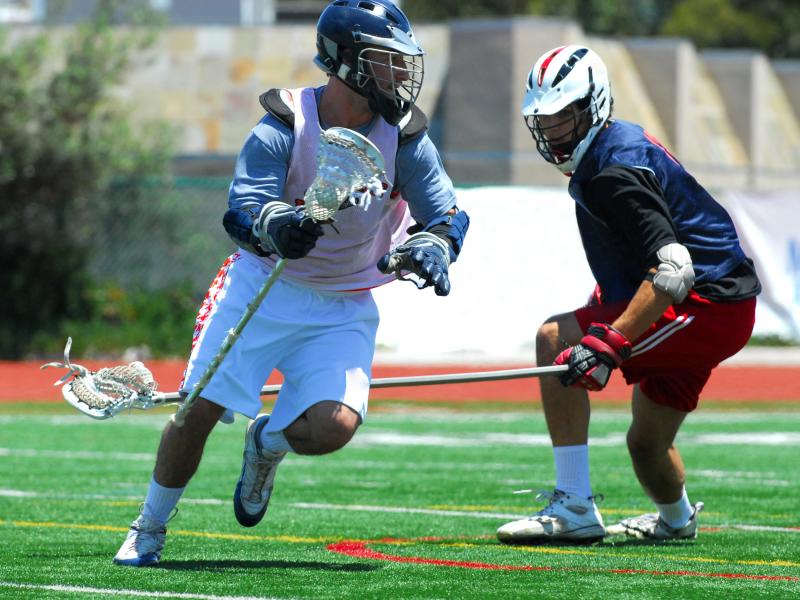
Bent over barbell rows work the lats, rhomboids, rear delts and biceps in an important horizontal pull. Hinge at the hips with soft knees holding the barbell. Keep a flat back as you drive your elbows back, squeezing the shoulder blades together.
Focus on controlled form rather than heaving the weight up. Lower the bar with control before beginning the next rep. Do 3 sets of 8-12 reps, progressively increasing the load.
Seated cable rows allow you to really isolate the back while eliminating cheating with body momentum. Sit up tall gripping the handle. Retract your shoulder blades and row the handle to your lower ribs.
Squeeze your back at the peak contraction before slowly lowering to the start with control. Vary the height of the pulley to hit different areas of the back.
Single arm dumbbell rows unilaterally work each side of the back independently. Support yourself on the bench with one hand and knee. Keep a flat back as you row the dumbbell up by driving the elbow back.
Go heavy and slow for 12-15 reps concentrating on really squeezing the back muscles. Alternate arms between sets.
Inverted bodyweight rows develop tremendous upper back and bicep strength. Hang underneath a bar gripping it shoulder width. Pull yourself up driving elbows back until your back is fully retracted.
Lower with control – don’t just let gravity drop you. Progress by adding weight plates in a vest once bodyweight rows get easy.
Band pull aparts target the often neglected mid and lower traps. Loop a resistance band in front of you and grasp both handles. Pull your arms out wide to the sides against tension.
Really focus on squeezing the shoulder blades together at the back of the movement. Do 2-3 sets of 15-20 reps for improved posture.
Face pulls work the external rotators of the shoulders important for injury prevention. With a rope attachment pull the rope apart and back with elbows flared out like a Y.
Go light and focus on squeezing the rear delts. Face pulls strengthen neglected smaller muscles.
Bent over Y raises target the posterior deltoids. Bend at the waist until parallel to floor. Raise your arms out to the side in a Y shape before lowering back down.
Use light dumbbells and do 2-3 sets of 12-15 reps with perfect form. Lead with the elbows and externally rotate to maximize contraction.
Pull ups are a challenging bodyweight movement that build incredible upper body strength. Being able to lift your entire bodyweight builds pulling power for athletic dominance on the field.
Do Pull Ups For Increased Upper Body Strength
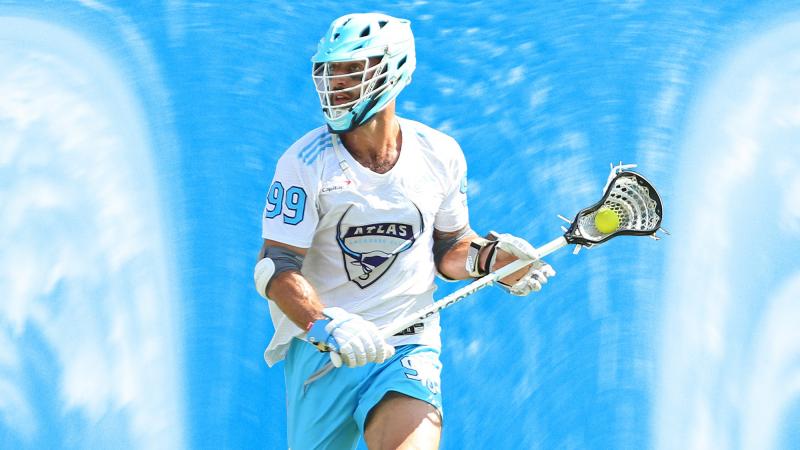
Grip the pull up bar with hands just outside shoulder width using either a pronated (overhand) or supinated (underhand) grip.
Engage your lats and retract your shoulders as you pull yourself up until your chin clears the bar. Pause briefly before lowering yourself with control.
If you can’t complete a full pull up, use an assisted pull up machine or resistance bands to take off weight until you build the required strength.
Once you can complete multiple regular pull ups, add weight with a belt or vest to progressively overload the upper body.
Chin ups target the biceps more by using an underhand grip. Pull the bar to your upper chest, driving elbows down and back.
The chin up grip hits the arms while still heavily taxing the lats. Mix up pronated and supinated grips.
Perform pull ups and chin ups explosively to build power. Use body English to create momentum driving shoulders, hips and knees up as you pull.
Kipping pull ups engage core muscles to transfer force through the kinetic chain for maximum power development.
Do weighted negative pull ups to build pulling strength. Use a box to jump up and slowly lower for 5-10 seconds emphasizing control.
Fighting gravity eccentrically forces strength gains without heavy loading. Negatives complement regular pull ups.
Band assisted pull ups reduce weight to allow higher total training volume. Loop bands around the pull up bar and place knees or feet in the bands.
This provides variable levels of assistance, allowing you to crank out higher reps once your muscles fatigue.
Perform pull up holds at various ranges of motion to build grip and shoulder strength. Pick a position and simply hold static.
The isometric holds strengthen stabilizer muscles through the shoulders for injury resilience.
Sprinting is vital for building the acceleration and top speed needed to blow by opponents on the lacrosse field. Integrating different sprint workouts enhances your athleticism.
Incorporate Sprints Into Your Training
10-30 yard sprints target max acceleration – crucial for quick bursts in lacrosse. From a standing start, sprint all-out for the desired distance. Walk back to recover before the next rep.
Do 6-10 reps focusing on proper form – tall posture, high knees, driving arms, full extension. Accelerate through the finish line.
Longer 200-400m sprints build your top speed endurance. Run at 95% max effort, pushing your speed boundaries while maintaining control.
Jog back to recover 1-2 minutes between sprints. 4-6 reps improve maximum velocity for outrunning opponents.
Suicides or cone drills force you to repeatedly accelerate, decelerate and change direction – exactly like in competition. Sprint 5-10 yards, touch a cone, reverse and sprint back.
Minimize deceleration steps between direction changes. Do 2-4 sets of 5-10 yards, progressing up to 20-30 yards over time as conditioning improves.
Sled sprints add resistance to sprint training for power development. Push or pull a weighted sled for 10-40 yard intervals. Unload the sled to reduce resistance on recovery walks.
The added resistance at high velocities strengthens muscles through a full range of motion specific to sprinting.
Resisted sprints with a partner or band increase hip and core activation. Have a partner provide manual resistance at your waist, or use a band around your hips.
Drive hard against the added load, maintaining proper sprint form through the finish. This grooves neuromuscular patterns.
Uphill and downhill sprints alter body mechanics and emphasize different muscles. Choose gradual slopes and sprint with intensity, driving your arms powerfully.
Varied sprint training ensures well-rounded speed development and reduces repetitive stress for healthier knees and ankles.
Stride length and high knee drills improve sprint form and coordination. Focus on extending your stride or lifting knees high with each rep.
Practice sprinting technique in isolation before incorporating into full speed runs. Perfect practice makes perfect!
Lacrosse requires lightning quick changes of direction. Agility ladder drills are an excellent way to enhance foot speed, coordination, and body control.
Work On Agility Drills Like Ladder Drills
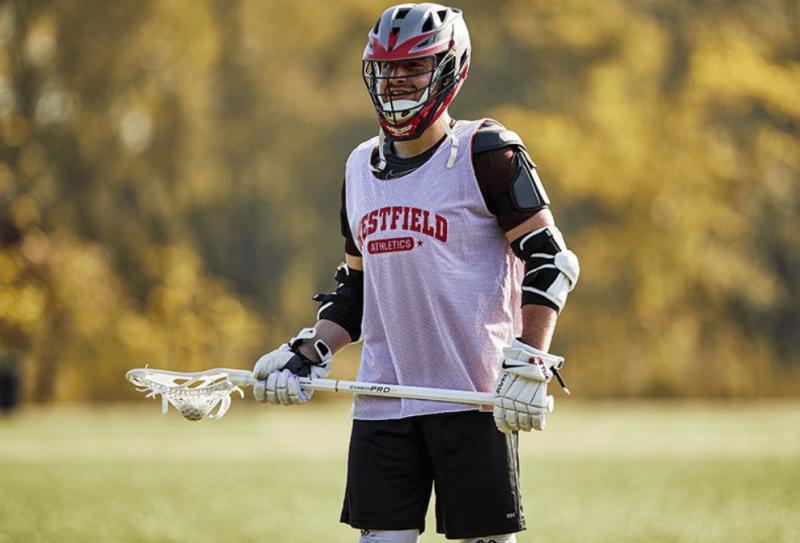
Set up an agility ladder flat on the ground. Shuffle through it laterally, stepping in each box without touching the ropes. Keep your hips low with knees bent and weight on the balls of your feet.
Drive your knees high and pump your arms for momentum. Do 2-3 sets of the full length, then walk back to recover.
Now shuffle through facing forward, driving off each foot explosively. Coordinate the complex footwork pattern, keeping your ankles and knees aligned.
Force single leg strides to strengthen stability and balance. Concentrate on smooth, quick changes of direction at each rung.
Run through the ladder driving your opposite knee high with each stride. Coordinate the crossovers, generating power from the grounded leg.
Exaggerate the knee drive and arm swing to maximize power with each step. Maintain your balance throughout.
Jump through the ladder on two feet, bounding into each box. Land softly absorbing impact through the hips and knees before exploding back up.
Jump as high as you can with each rep, fully extending the hips, knees and ankles. Stick the landing with control.
Now alternate between single leg hops down the ladder, hopping laterally into each box. Bring the trailing leg quickly through after landing.
Power single leg jumps build unilateral strength and dynamic balance essential for cutting during competition.
Run through the ladder backwards to work on change of direction abilities. Ensure your ankles, knees and hips stay aligned when redirecting.
Sharpen your agility with reactive cone drills, sprints and shuttle runs. Quicker feet translate to crisper cuts.
Developing aerobic endurance gives lacrosse players the stamina to maintain a high activity level for the full 60 minute game. Long distance running is key for building an endurance base.
Improve Stamina With Long Distance Running

Perform long steady run workouts of 30-60 minutes at an easy conversational pace 1-2 times per week. Breathing should remain under control.
Gradually increase your distance or duration over time as fitness improves. Proper recovery including rest days prevents overtraining.
Mix up running surfaces – trails, tracks, treadmills etc. Varying terrain enhances balance and strength while reducing repetitive impact.
Occasionally include sustained moderately hard efforts of 20-40 minutes at approx 80-85% max heart rate. These tempo runs expand your lactate threshold.
One long run per week should make up 20-30% of your total weekly distance. For example, precede 60 min runs with 30-45 min runs.
Run hills once per week to build leg strength and improve speed. Charge up inclines focusing on powerful drive from your glutes and hamstrings.
Break runs into intervals like 6×5 minutes hard/easy for variation. Push the pace during hard intervals and actively recover during easy sections.
Include short 1-2 minute surges within runs where you accelerate above your normal pace before settling back into rhythm.
Monitor heart rate and perceived exertion. Run at lower intensities on hotter days and be sure to properly hydrate and fuel.
Progress weekly mileage by no more than 10% to safely adapt your body while minimizing injury risk.
Relax on easy days and don’t try to PR every run. Hard/easy training enhances fitness gains.
Pushing and dragging weighted sleds builds tremendous full body strength and power in lacrosse players. Driving forward against resistance taxes the muscles through a complete range of motion.
Get Stronger With Weighted Sled Pushes
Use 10-30% of your body weight on the sled to start. Load plates horizontally, not stacked vertically for stability.
Push the sled for 10-40 yards at time focusing on powerful leg drive and full extension with each step. Walk back unloaded.
Drive low and explosively, maintaining proper sprint posture. Don’t allow the resistance to collapse your form.
Perform angled pushes – lateral, backwards, dragging uphill etc. to hit muscles through different vectors.
Accelerate into max speed each rep before riding the sled down to a controlled stop. Work on speeding up and slowing down.
Pull the sled backwards by attaching a rope to the front. Sprint aggressively into the harness, pumping your arms.
Concentrate on driving off the balls of your feet for strong acceleration with each step.
Increase sled weight over time as you get stronger. But avoid loading so heavily you move at a snail’s pace.
Combine with battle ropes, medicine balls and tires for a full strongman circuit. Training with odd implements builds total body power.
Allow at least 1-2 days recovery between sled sessions to manage fatigue. Schedule after warm-up when your muscles are fresh.
Sled sprints add resistance to speed training for rate of force development. Pair with regular sprints for well-rounded conditioning.
Incorporating resistance band training helps prevent common lacrosse injuries while enhancing athletic performance. Bands add variability to strengthen stabilizer muscles and connective tissue.
Use Resistance Bands For Injury Prevention

Perform band walks to improve hip stability and strengthen the glutes and abductors. Step laterally side to side into a wide squat stance, pressing knees outward against the band.
Focus on smooth controlled movement and proper alignment. Do 2-3 sets of 10-20 steps per side.
Monster walks target the glutes and inner thighs. With band around ankles, laterally step into a low athletic stance. Avoid allowing knees to cave inward.
Strong adductors stabilize sudden changes of direction during play. Do 2-3 sets of 10-15 yards.
Stand on the band to perform lateral lunges, pressing knees outward on each rep. Maintain an upright torso and control deceleration as you return to start.
This unilateral move strengthens hip and knee stability. Perform 2-3 sets of 10-12 controlled reps per side.
Band pull aparts strengthen the mid and lower traps. Pull the band ends apart driving your shoulders back. Squeeze your shoulder blades together.
Improved scapular and rotator cuff strength supports healthier shoulders during checks.
Overhead band presses require integrated core activation to stabilize the body against tension. Press straight up without arching your back.
Full body tension builds strength in a fixed position – crucial for draws and ground balls. Do 2-3 sets of 10-15.
Use bands for assisted chin ups and pull ups to build upper body pulling power until you can complete bodyweight reps.
Band supported jump squats reduce impact while increasing explosiveness. Squat down then drive up explosively.
The accommodating resistance allows you to overload strength at weak points in the movement.
Consistently stretching after lacrosse workouts is vital for flexibility, recovery and injury prevention. Take time to target all the major muscle groups stressed during training.
Make Sure To Stretch After Every Workout

Hold static hamstring stretches like seated or standing toe touches for 30-60 seconds. Keep your back straight and chest lifted as you reach for your toes.
Tight hamstrings contribute to low back pain and pulled muscles. Regularly stretching them improves range of motion.
Target the hip flexors and quads with lunges, kneeling hip flexor stretches, and quad pulls. Engage your core and maintain upright posture.
Open hips and activate glutes with stretches like figure 4s and pigeon pose. These areas power sprinting and checking.
Calves bear the brunt of stopping/starting and changing direction. Stretch soleus and gastrocnemeus with a wall lean and bent knee.
Loosen up the inner thighs with butterfly stretches. Pain on the inner knee or groin can signal tight adductors.
Perform shoulder stretches like cross body and side lying windmills to improve range of motion and prevent labrum/rotator cuff issues.
Stretch the pecs and lats with door frame stretches bringing the arms behind you. This counteracts hunched posture.
Foam roll major muscle groups like the IT band, calves and back to encourage blood flow and help soreness.
Relax into deep static stretches rather than aggressively forcing range of motion to respect your body’s limits.
Stick to a consistent post-workout stretching routine. Improved mobility enhances athleticism and resilience.
Proper nutrition provides lacrosse players with the fuel and building blocks to get the most out of training while supporting recovery between sessions.
Eat Right To Fuel Your Lacrosse Workouts
Emphasize lean proteins like chicken, fish, Greek yogurt and eggs to build and repair muscle damaged by hard training.
Choose complex carbohydrates including oats, quinoa, sweet potatoes and whole grain breads to replenish muscle glycogen stores.
Healthy fats like avocado, nuts, olive oil and salmon provide energy and support hormone production and joint health.
Stay well hydrated before, during and after workouts to deliver nutrients, regulate body temperature and prevent cramps.
Time meals and snacks appropriately – eat carb-rich meals 3-4 hours pre-workout and quickly refuel with protein and carbs post-workout.
Pack snacks like trail mix, bananas, beef jerky and protein bars to maintain energy on busy lacrosse days.
Reduce inflammatory foods like fried foods, processed carbs and sugary drinks which hamper recovery.
Take a protein supplement like whey or casein for a fast absorbing or slow releasing protein source as needed.
Increase caloric intake gradually if trying to gain size and strength for your position – don’t adopt an extreme diet.
Allow your body proper nutrients through wholesome balanced eating for optimal performance gains.
Stay vigilant for signs of nutritional deficiencies which can negatively impact energy and immunity.
While intense lacrosse training is necessary for optimal performance, allowing adequate rest is equally important. Proper recovery prevents overtraining injuries and replenishes the body.
Allow Time For Rest And Recovery

Take at least 1-2 full rest days per week where you do no intense training. Use these days for light activity like walking, stretching or foam rolling.
Listen to your body and take extra rest when needed if you are feeling overwhelmed or accumulating nagging pains.
Get 7-9 hours of quality sleep per night to allow muscle repair and energy restoration. Prioritize consistency in your sleep schedule.
Incorporate recovery techniques like contrast water therapy, compression wear, massage, and meditation.
Eat a nutrient rich diet emphasizing whole foods to provide your muscles the resources they need to bounce back.
Hydrate well by sipping water and electrolyte drinks throughout the day to replenish fluids lost sweating.
Manage your lacrosse training load week-to-week to avoid sudden spikes in volume or intensity.
Take advantage of deload weeks every 4-6 weeks where you back off intensity and volume to decompress.
Focus on active rest and mobility during recovery sessions – foam roll, stretch, perform light cardio.
Don’t ignore early signs of overtraining like persistent fatigue, loss of motivation and performance declines.
Be patient in the recovery process to come back stronger. Pushing through exhaustion often backfires.
While generic training can provide a base level of fitness, optimizing your performance as a lacrosse player requires a customized approach. Seeking guidance from a qualified coach can take your game to the next level.
Seek Professional Guidance For Program Design

A lacrosse strength and conditioning coach can evaluate your athletic attributes and needs for your position and level of play.
They’ll design a periodized annual plan focused on maximal strength, power, speed and conditioning at the optimal times.
An experienced coach incorporates training modalities like weightlifting, plyometrics, sprinting and energy system work in a synergistic manner.
They properly manage volume, intensity and recovery weeks to maximize adaptation and progress while reducing injury risk.
Coaches keep your program fresh and avoid stagnation by systematically varying exercises, sets, reps and other training variables.
They’ll regularly assess your movement and monitor feedback to modify the plan when needed based on your response.
You’ll receive cues on proper exercise technique, mobility drills and programming for muscle imbalances.
A coach provides motivation and accountability during tough sessions when you want to slack off.
Knowledgeable professionals advise the best approach to fueling and hydrating around workouts.
Don’t leave massive performance gains on the table by haphazardly training. Invest in expert guidance tailored to you.